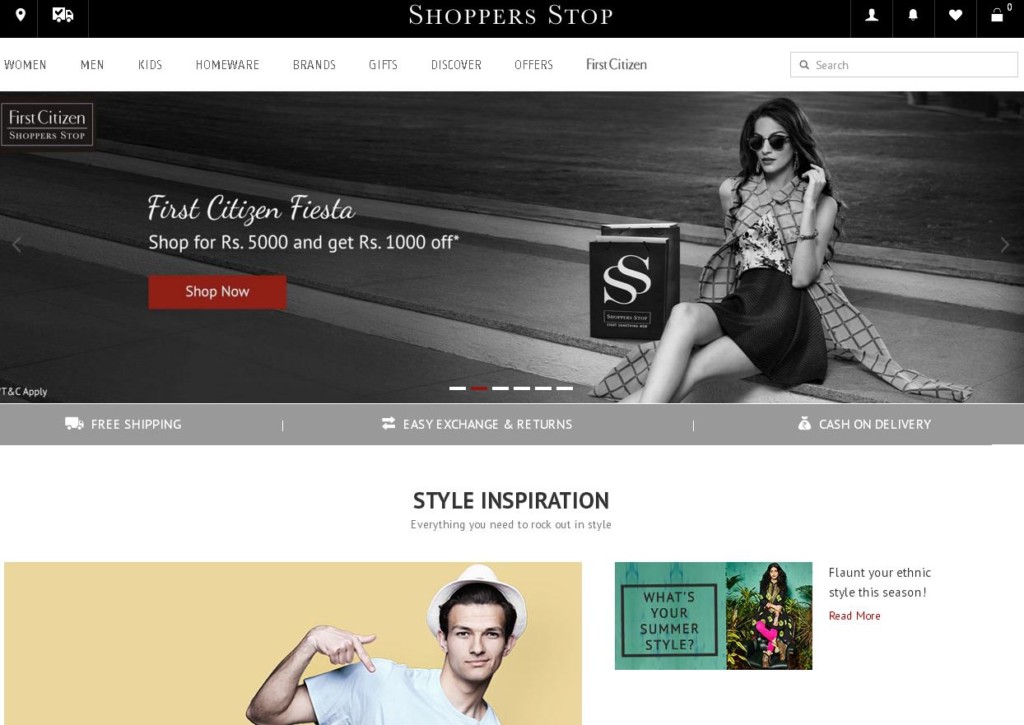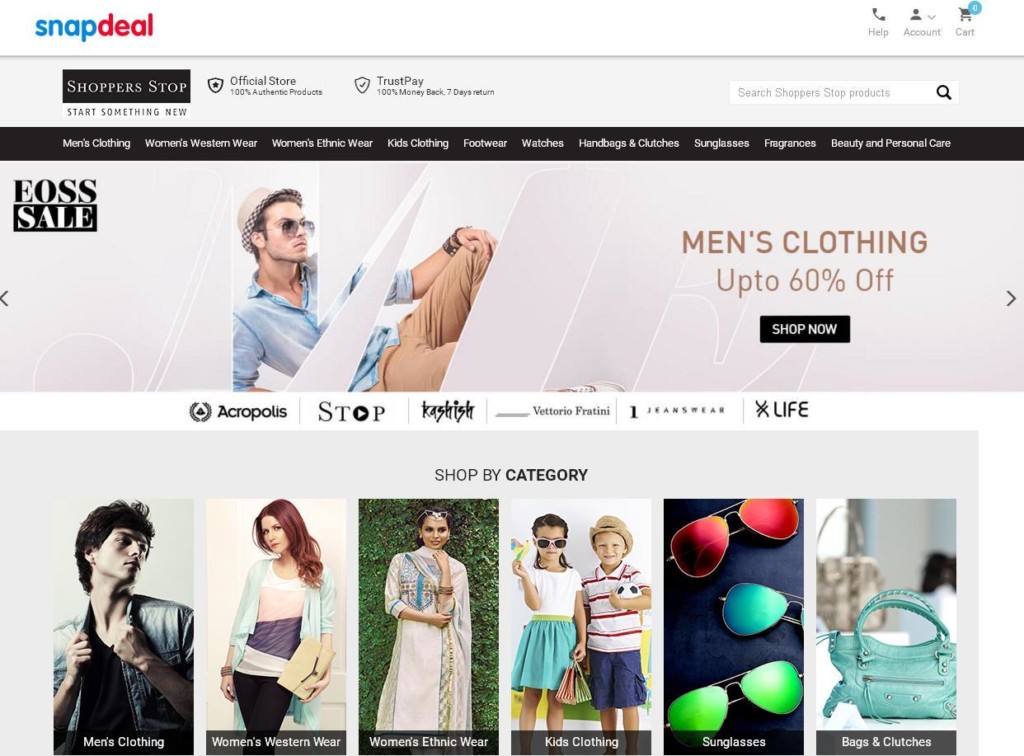Welcome to the omnichannel universe, where consumers love the modernity and exploration possibilities of online platforms but have not completely fallen out of love with the physical world. While there is a perceptible shift in consumer behaviour – with the rise of the netizens and the advent of Internet-powered devices powering this deflection – shoppers today still want to engage with the brand at any point of time through multiple mediums.
Many pure-play brick-and-mortar Indian retailers took note and 2015 witnessed the omnichannel changeover evolve from being a buzzword, to becoming reality. Multiple retailers across channels and categories have warmed up to the omnichannel world and their strategies are already in effect, even as some have struggled with the ‘How’of it all.
Keeping that in mind, here’s a closer look at omnichannel initiatives taken by two retailers during the fiscal gone by — multi-brand retailer Shoppers Stop and own brand retailer Adidas Group — who both implemented it in detail at all stages of the shopper journey. Both were honoured at the IMAGES Fashion Awards 2016 ceremony last month with the’Most Admired Fashion retailer of the year: Omnichannel Initiative’ recognition.
SHOPPERS STOP
Shoppers Stop Ltd, one of the early adopters of omnichannel dominance, has laid down a clear business and technology execution blueprint for three years (2015-2017), with Rs 60 crore being dedicated towards beefing up technology, strengthening the digital supply chain, hiring specialised talent and optimising digital marketing operations.
Shoppers Stop Ltd currently operates 76 department stores across 34 cities. Over the last year, the company launched several omnichannel and digital initiatives to shore up its customer experience. The agenda is to become a truly omnichannel retailer across the company’s formats – HomeStop, HyperCITY, and Crossword– by 2017.
The company is following a three-pronged strategy divided into three phases — digital capability buildout (2015), multi-channel (2016) and finally, true omnichannel retailer (2017).
“The idea is to be a brick and mortar play, online play, omnichannel play, and marketplace play… so that customers can find us wherever they are and want to shop from. For a retailer like us, omnichannel means putting the consumer at the centre of our strategy and allowing them to decide when, where, and how to shop. The consumer can order anytime, anywhere, and from any device,” Govind Shrikhande, MD, Shoppers Stop, told Indiaretailing in an earlier interview.
Strategy in depth
As a first step towards technology execution, Shoppers Stop partnered with Hybris Software, a SAP company and one of the world’s fastest growing commerce platform providers, for SAP Hybris Commerce & Order Management Platform in Q1 2015. This was followed by an investment in Warehouse Management System in Q4 2015, to provide seamless and unified shopping experience to customers across multiple channels.
In the same quarter, the company redesigned and launched a new website which is responsive across various screen sizes including mobile, tablets etc. The new website doubled the conversion rate.
The 2015 strategy also touched upon initiatives toward embedding ‘digital inside the store’. Magic Mirror was one such launch during Q4 2015 in Shoppers Stop Mumbai’s Inorbit Mall store. A first-of-its-kind in a department store in India, the Magic Mirror enabled customers to swipe through various products without having to physically ‘try on’ the desired products.
In addition to its own websites, omnichannel capabilities, and in-store features, Shoppers stop also entered into strategic alliances with major e-commerce players in 2015. The company set up anchor stores or microsites with Snapdeal (strategic, full assortment), Amazon, Flipkart, Jabong and PayTM to sell shoppers stop brands on these marketplaces. It also tied up with hyperlocal e-grocers such as ZopNow, Grofers and PepperTap, who picked up grocery from HyperCITY for deliveries.

The company’s omnichannel play also focused on payment solutions and customer analysis tools to provide a seamless experience through all ways possible. Shoppers Stop accepts Freecharge wallet in all its stores. The company claims to offer the same experience to the customer in terms of service at the store, calls, emails, social media. They are also in a process of rolling out a Customer relationship management (CRM) to take this experience to the next level.
What’s Next?
The beginning of 2016 saw the launch of new mobile apps, both on Android & iOS platform. The company claims to be the only department store chain retailer in India that has been able to launch a new website and mobile app on an enterprise-grade platform like Hybris in just over six months.
“Year 2015 was a buildout year; 2016 will be our inflection point,” Sachin Oswal, Omni Channel Head, Shoppers Stop said.
“This is just the beginning of our omnichannel journey and a lot lies ahead of us. In 2015, the online share of our overall revenue was 1%, we target this to reach 5% this year (2016) touch 15% by FY 2018. Global retailers took 7-10 years to get to these numbers,” he pointed out.
ADIDAS GROUP
With 500 plus stores for Adidas and 250-plus stores for Reebok, Adidas Group in India aggressively rolled out an omnichannel strategy n 2015 to integrate its vast retail expanse with shopper-friendly technology.
With an ‘endless aisles’ technology as the centre of its strategy, the group has managed to transform its 227 offline stores in the past seven months. The ‘endless aisle’ technology equips Adidas and Reebok franchise stores with iPads where shoppers can browse and order for items that are not in stock at the physical stores.
Quite like Shoppers Stop, Adidas Group has also identified three key pillars to merge its online and offline worlds: create strong in-store experiences, move from data to actionable data and provide seamless experiences across channels.
Strategy in Depth
As a first step, the website and mobile site for both Adidas and Reebok were set up in early 2015, followed by a roll out of ‘endless aisles’, connecting 220-plus stores via iPads. By 2017, this number is likely to jump to 750 stores.
“We have seen consumers walking into a sports performance store and picking up Original or Neo products. Furthermore, a pilot is underway at the moment to record real time Net Promoter Score (NPS) at the stores. This would help the sores to enhance the customer experiences on an ongoing basis,” Abhishek Lal, Senior e-Commerce Director, Adidas Group India, explained.
 The solution is managed by an Adidas Group franchisee. The entire technology has been developed in-house and powered by Microsoft AX ERP and Microsoft Dynamics CRM. The UI/UX and front-end components are managed by Infosys on their SaaS-based platform called Interactedge. In addition, Oracle Responsys has been deployed to provide automated and cross-channel marketing.
The solution is managed by an Adidas Group franchisee. The entire technology has been developed in-house and powered by Microsoft AX ERP and Microsoft Dynamics CRM. The UI/UX and front-end components are managed by Infosys on their SaaS-based platform called Interactedge. In addition, Oracle Responsys has been deployed to provide automated and cross-channel marketing.
As a next step, the group is focusing on acquiring meaningful consumer data through mobile, e-com, and retail POS. The group has set for itself a target of acquiring one million consumers in 2016. “The objective is to know our consumers in a meaningful way and eventually create a single customer view. This single customer view would then help in driving relevant, credible and authentic marketing/conversations with the consumers,” Lal added.
Along with these capabilities across-channel, marketing campaigns are also being orchestrated in which the traffic is being guided to retail stores via E-commerce and vice-versa.
What’s Next?
The following programs are under development at the moment at Adidas Group India:
– Loyalty program
– Reward points
– Ship-from-store
– Customer centric app and
– Social media listening and engagement tools
A closer look at omnichannel initiatives taken by two retailers during the fiscal gone by — multi-brand retailer Shoppers Stop and own brand retailer Adidas Group
Must Read


